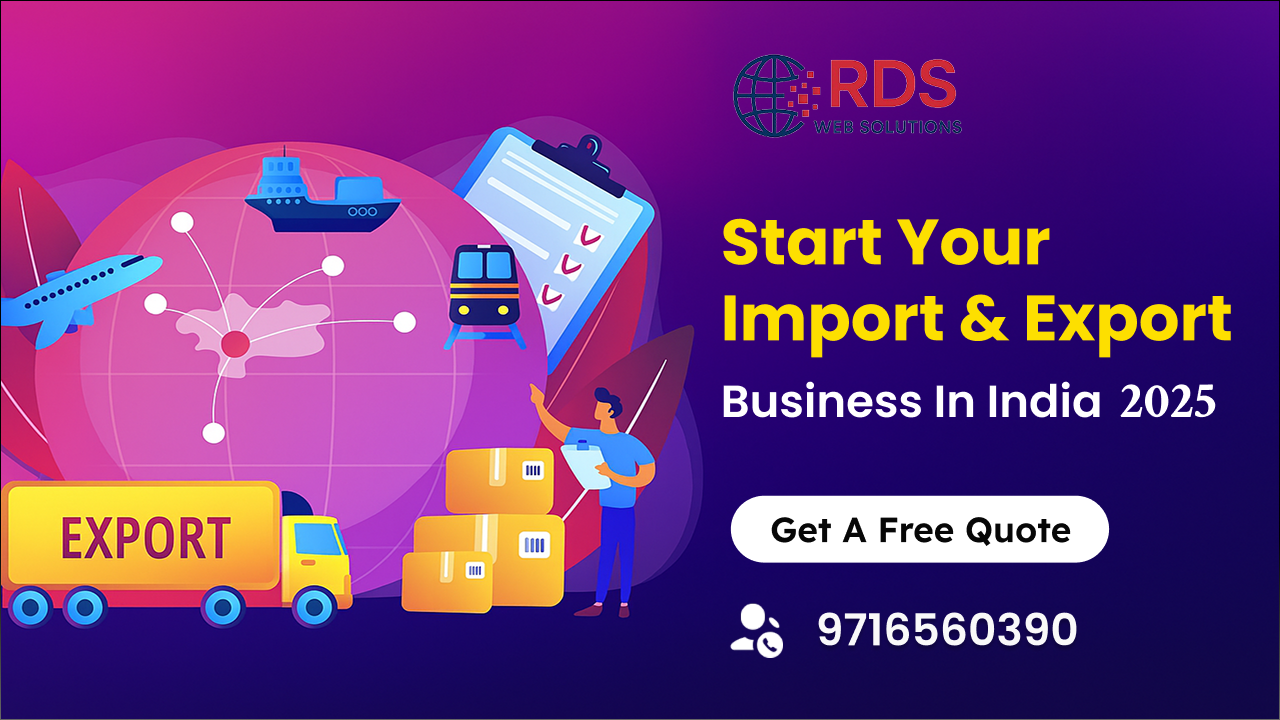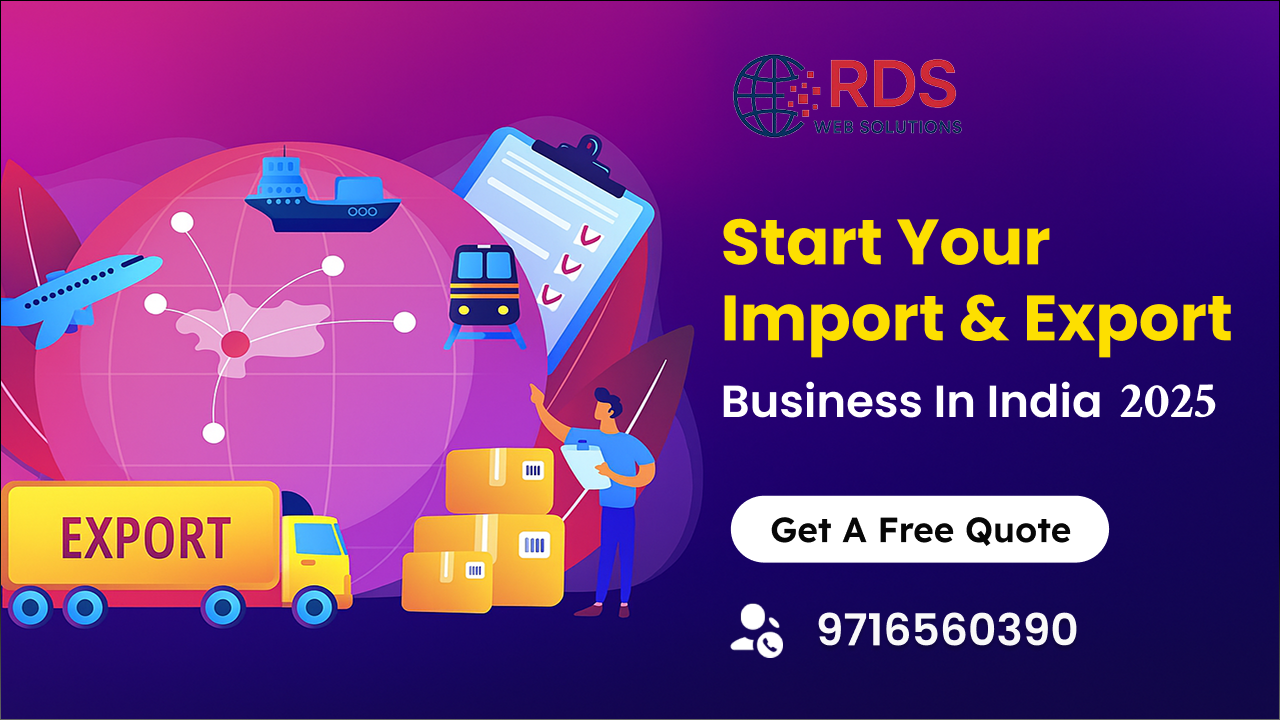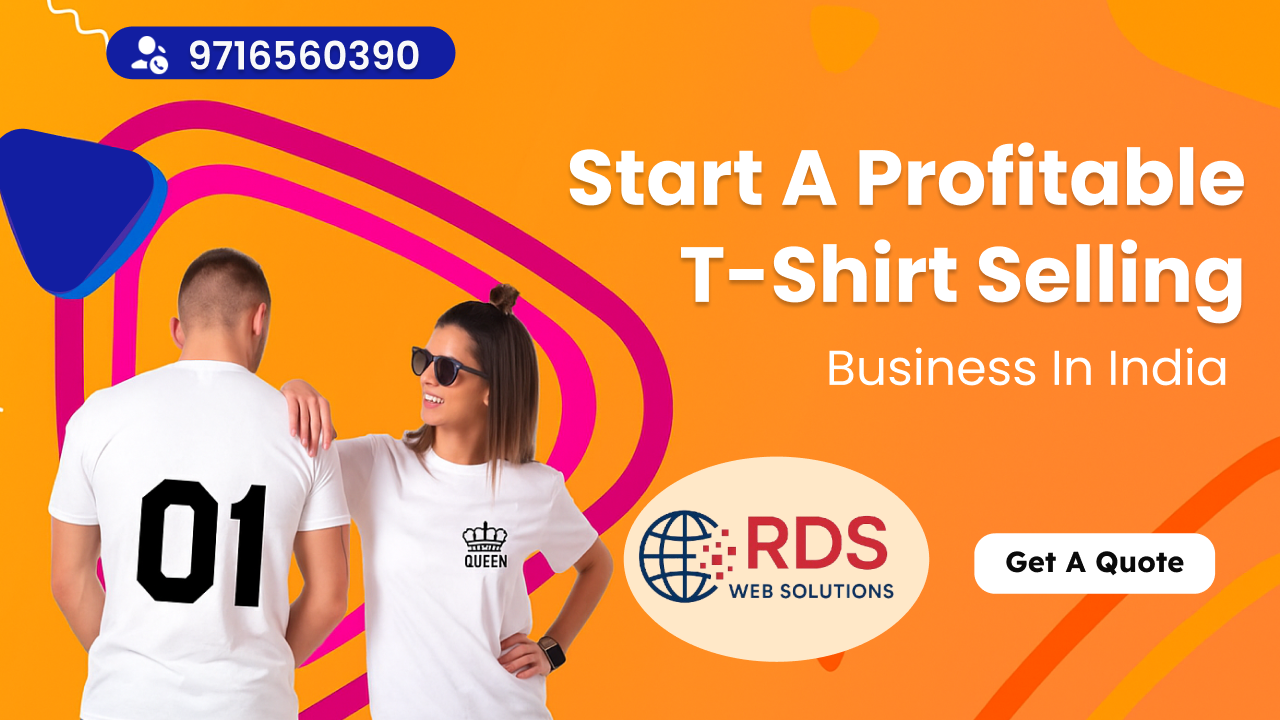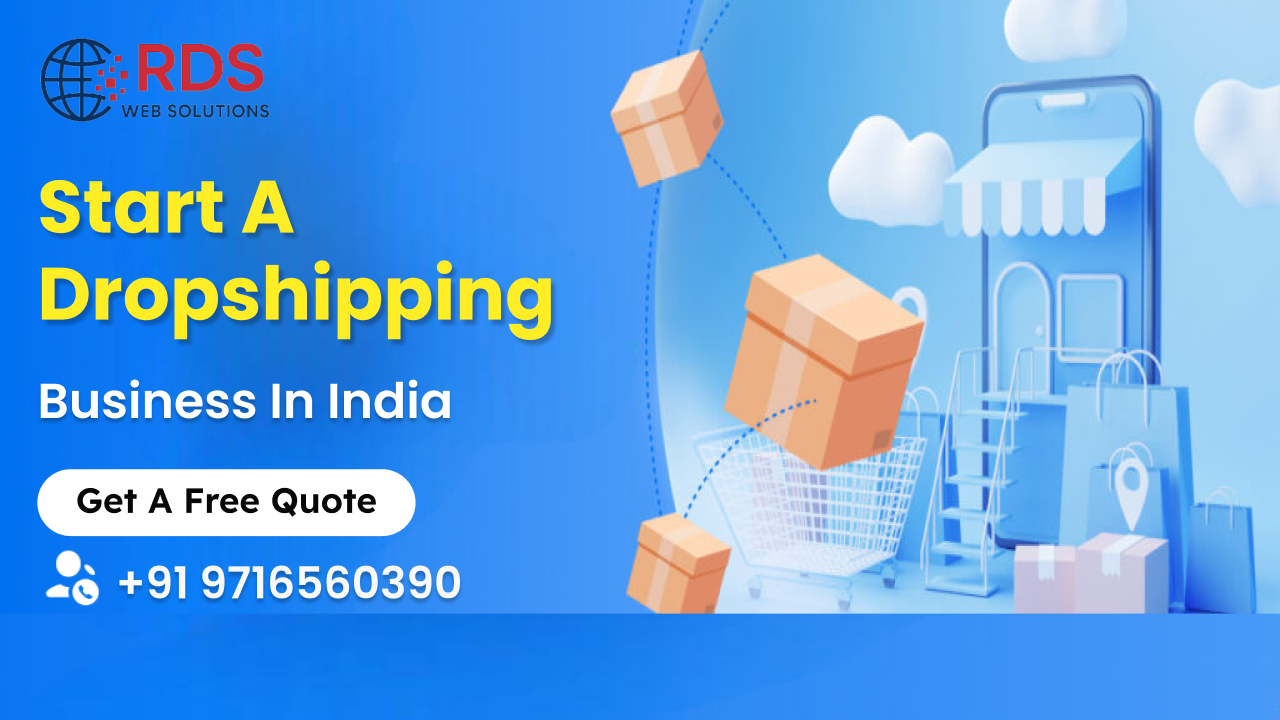
🚀 Introduction: Why Import-Export Is One of the Most Profitable Businesses in 2025
In today’s global economy, import and export is one of the most lucrative and scalable business models for entrepreneurs in India. With international trade growing by over 8% annually, Indian businesses now have easier access than ever before to foreign markets, buyers, and suppliers. Whether it’s exporting Indian textiles to the USA or importing machinery from China, the opportunities are endless.
The good news? You don’t need a massive factory or huge investment to get started. Even small startups and individuals are launching profitable import-export businesses from home — often starting with just a laptop, a website, and the right legal registrations.
At RDS Web Solutions, we don’t just build websites — we help startups, traders, and small businesses establish a professional online presence that attracts global buyers, builds credibility, and scales revenue in international markets.
In this step-by-step guide, we’ll show you how to start an import-export business in India in 2025 — and explain why having a website is not optional, but essential for your success.
Before you begin, it’s important to understand how this business works. Import-export businesses revolve around buying products from one country and selling them in another — either as a trader, agent, or manufacturer.
🏭 Export Business: Selling Indian goods to foreign buyers. (e.g., handicrafts to the USA)
🚢 Import Business: Buying foreign products and selling them in India. (e.g., electronics from China)
🔁 Re-Export Business: Importing goods and exporting them again after minor processing.
🤝 Export-Import Agent: Acting as a middleman between foreign buyers and local suppliers.
💡 Pro Tip: Most new entrepreneurs start as exporters because Indian products like textiles, spices, handicrafts, auto parts, and software services are in high demand worldwide.
Success in international trade starts with choosing the right product and identifying your target market.
✔Look for high-demand products in global markets (e.g., organic food, Ayurveda products, cotton garments).
✔Focus on India’s export strengths — textiles, spices, jewelry, handicrafts, auto components, software, etc.
✔Research competition and pricing on platforms like Alibaba, Indiamart, and Global Sources.
✔Consider logistics, shipping costs, and shelf life.
✔Use trade data portals like Export Genius or India Trade Portal.
✔Analyze demand in key markets like the USA, UAE, UK, and Europe.
✔Explore free trade agreements (FTAs) between India and other countries to reduce import/export duties.
✅ Example: Organic cotton T-shirts from India are highly in demand in the USA and Europe. They cost ₹150–₹200 locally and sell for ₹800–₹1,000 overseas — a 4–5x profit margin.
To operate legally and trade internationally, you must complete the following registrations:
🏢 Business Entity Registration: Register as a Sole Proprietorship, LLP, or Pvt. Ltd. company.
🧾 PAN Card: Required for all business and tax purposes.
📜 GST Registration: Mandatory for domestic transactions.
🌐 Import Export Code (IEC): A 10-digit code issued by DGFT. It’s essential for all import/export activities.
🏦 Current Bank Account: Dedicated business bank account for international transactions.
💼 Udyam/MSME Registration: Optional, but helpful for government incentives.
📑 AD Code Registration: Required with your bank for customs clearance.
💡 Estimated Cost: ₹5,000 – ₹20,000 for registration, GST, and IEC combined.
✅ Time to complete: Usually 7–15 business days.
Your network of suppliers and buyers determines your business success.
Here’s how to find them:
✔IndiaMART – Great for sourcing Indian products.
✔TradeIndia – Verified suppliers and manufacturers.
✔Alibaba / Global Sources – International suppliers.
✔Meesho / Amazon – Good for small-scale imports and product ideas.
✔B2B platforms: Alibaba, ExportersIndia, TradeKey, GlobalTrade.
✔Social Media: LinkedIn and Instagram for connecting with wholesalers and resellers.
✔Government Portals: Indian Trade Portal and EPC listings.
✔Trade Fairs & Exhibitions: Great way to meet global buyers face-to-face.
💡 Pro Tip: Always request samples, negotiate Incoterms (FOB, CIF), and sign clear contracts before shipping large orders.
Here’s a realistic budget breakdown to start an import-export business in India:
| Category | Estimated Cost |
|---|---|
| Company Registration & GST | ₹5,000 – ₹20,000 |
| Import Export Code (IEC) | ₹500 – ₹1,000 |
| Website Development | ₹15,000 – ₹75,000 |
| Product Samples & Testing | ₹10,000 – ₹25,000 |
| Logistics & Freight Setup | ₹15,000 – ₹50,000 |
| Marketing & Branding | ₹20,000 – ₹1,00,000 |
| Miscellaneous (Legal, Customs, etc.) | ₹10,000 – ₹30,000 |
👉 Minimum Investment: ₹50,000 – ₹1,00,000 (basic setup)
👉 Full-Scale Setup: ₹2,00,000 – ₹5,00,000+ (for manufacturing, large orders, and global marketing)
Logistics and compliance are crucial in global trade. Here’s what you need:
📦 Shipping Partners: DHL, FedEx, Blue Dart, Maersk
🧾 Customs Clearance Agents: To manage export/import documentation.
📃 Essential Documents:
✔Commercial invoice
✔Packing list
✔Bill of lading
✔Certificate of origin
✔Insurance certificate
💡 Always ensure your HS codes (Harmonized System codes) are accurate — errors can lead to heavy penalties or shipment delays.
Here’s the most critical part most beginners ignore: Your website is not optional — it’s your global identity.
In the import-export industry, a website is more than just an online brochure — it’s your digital trade office, available 24/7 across time zones. Without a website, you’ll lose credibility, miss global leads, and limit your growth potential.
Over 85% of B2B buyers check a company’s website before contacting them. A professional, multilingual website signals that you’re a legitimate, trustworthy business.
Display your product catalog, export capabilities, certifications, and compliance documents — making it easier for buyers to choose you over competitors.
SEO-optimized websites can attract buyers from the USA, UK, UAE, and Europe searching for products like yours on Google.
Integrated enquiry forms, chatbots, and WhatsApp buttons make it easy for buyers to contact you directly from anywhere in the world.
Integrate payment gateways for advance orders and B2B payments, making global trade seamless.
At RDS Web Solutions, we build powerful, conversion-focused websites designed specifically for import-export businesses. Your website should include:
🌍 Multi-language support (English + target country languages)
📦 Product catalog with specifications
📄 Certifications & compliance documents
📞 Contact and enquiry forms
🧭 About Us & company profile page
🗺️ Shipping policies and trade terms
🤖 AI chatbot for buyer communication
📈 SEO & lead generation features
💡 A professional website can increase your conversion rate by up to 300% and help you secure international clients faster.
Your website is your foundation — now you need to promote it.
📈 SEO: Rank on Google for terms like start import export business 2025 and B2B trade website India.
📱 LinkedIn Outreach: Connect with decision-makers and procurement managers.
✉️ Email Campaigns: Send product catalogs to potential buyers.
🌐 Online B2B Marketplaces: List on Alibaba, TradeIndia, and Global Sources.
🎯 Paid Ads: Run Google Ads targeting specific countries and products.
💡 Pro Tip: Keep your website content updated with new product listings, certifications, and case studies to improve trust and SEO ranking.
Building an import-export business without a website is like trying to open a global office without an address. At RDS Web Solutions, we specialize in creating high-performance trade websites that help Indian exporters and importers:
🌍 Connect with international buyers 24/7
📈 Build trust with certifications, portfolios, and testimonials
🧠 Automate lead generation and enquiries
🛒 Showcase products with professional catalogs
🔍 Rank on Google for global trade keywords
Whether you’re just starting out or scaling globally, we’ll help you build a strong digital foundation that accelerates your international trade success.
Q1. What registrations are mandatory in India?
Business entity, PAN, GST, IEC (DGFT), current account, and AD code with your bank.
Q2. How much capital do I need to start?
Basic setup from ₹50k–₹1L; serious trading with samples, logistics, and marketing ₹2L–₹5L+.
Q3. How do I find buyers and suppliers?
B2B portals (Alibaba, TradeIndia, IndiaMART), LinkedIn outreach, trade fairs, EPCs, and your website.
Q4. Why is a website essential for export?
Global trust, 24/7 lead capture, SEO discoverability, credential showcase (certifications, COOs), and multilingual reach.
Q5. What must my trade website include?
Product specs, certifications, HS codes, MOQ, Incoterms, request-a-quote, WhatsApp/call buttons, and geo landing pages.
Q6. Which markets are best to start with?
USA, UAE, UK, EU—based on your product’s demand, duties, and logistics feasibility.
Q7. Who handles customs and documents?
Use a reliable CHA/freight forwarder; prepare invoice, packing list, BL/AWB, COO, insurance.
Q8. How long to get first export orders?
With a professional site + targeted outreach, many SMEs see initial enquiries within 2–8 weeks.
Starting an import-export business in India has never been easier — and 2025 is the best time to begin. With rising global demand, strong Indian manufacturing, and digital tools at your fingertips, you can build a profitable global brand from anywhere.
🚀 Partner with RDS Web Solutions and let us build your professional, SEO-optimized import-export website — the key to unlocking buyers, deals, and profits worldwide.
👉 Contact us today to start your import-export journey.
The import-export business is a gateway to global entrepreneurship. But in today’s digital-first world, your success depends on your online presence. A professional website doesn’t just showcase your products — it builds credibility, generates leads, and opens doors to global markets.
Whether you’re exporting Indian goods or importing international products, having the right digital foundation with RDS Web Solutions can make all the difference between staying local and going global.
Part of what makes us the Website Designer expert team that we are is our ability to remain agile and adapt to industries of all kinds.




















© Copyright RDS WEB Solutions- Web Designing Company Noida,Delhi,India. 2017-2025. All rights reserved | Terms & Condition
Disclaimer: ⭐ All prices are for reference only. The final cost depends on your exact requirements, features, design preferences, and project complexity. Customizations or additional functionality may increase pricing. Final quotation will be shared after detailed discussion.